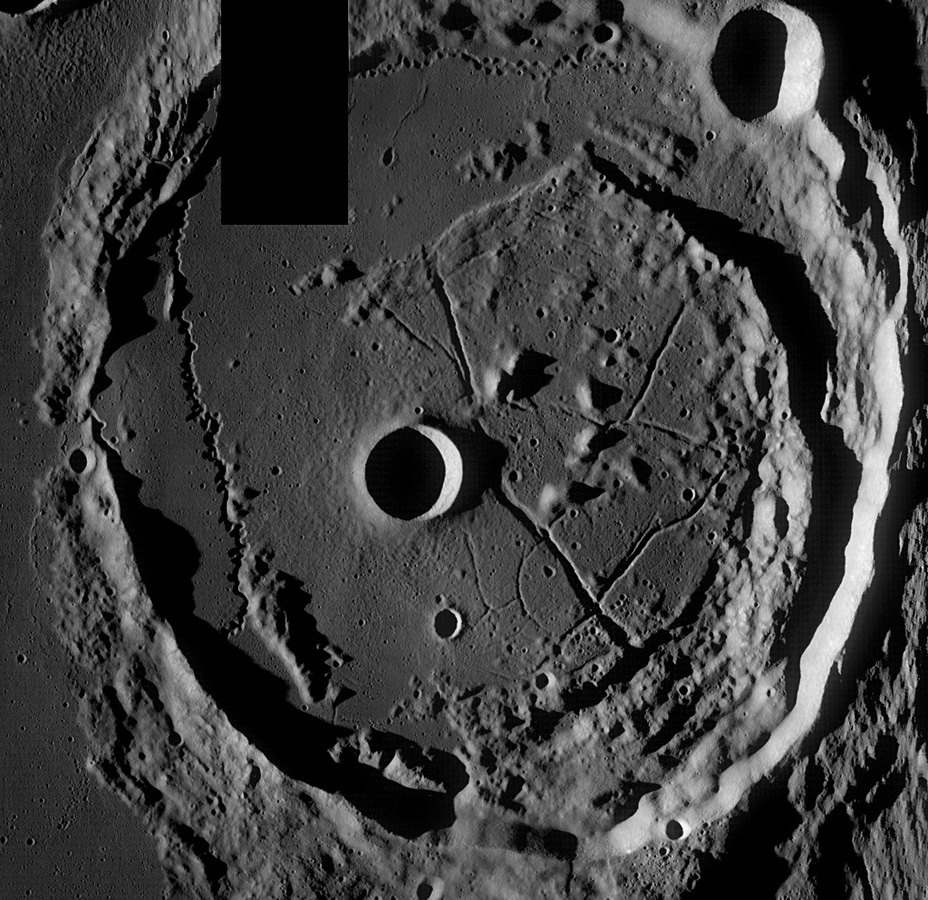Difference between revisions of "September 19, 2010"
| Line 1: | Line 1: | ||
__NOTOC__ | __NOTOC__ | ||
=Posidonius - a Geologists Paradise= | =Posidonius - a Geologists Paradise= | ||
| − | |||
<!-- ws:start:WikiTextHeadingRule:1:<h1> --> | <!-- ws:start:WikiTextHeadingRule:1:<h1> --> | ||
<br /> | <br /> | ||
| − | <!-- ws:start:WikiTextLocalImageRule:17:<a href="http://lpod.wikispaces.com/file/view/LPOD-Sept19-10.jpg/163676213/LPOD-Sept19-10.jpg"><img src="/file/view/LPOD-Sept19-10.jpg/163676213/LPOD-Sept19-10.jpg" alt="" title="" /></a> -->[ | + | <!-- ws:start:WikiTextLocalImageRule:17:<a href="http://lpod.wikispaces.com/file/view/LPOD-Sept19-10.jpg/163676213/LPOD-Sept19-10.jpg"><img src="/file/view/LPOD-Sept19-10.jpg/163676213/LPOD-Sept19-10.jpg" alt="" title="" /></a> -->[[LPOD-Sept19-10.jpg|[[File:LPOD-Sept19-10.jpg|LPOD-Sept19-10.jpg]]]]<!-- ws:end:WikiTextLocalImageRule:17 --><br /> |
| − | <em>image by [http://the-moon.wikispaces.com/LRO LRO WAC] from [mailto:revans_01420@yahoo.com Rick Evans]</em><br /> | + | <em>image by [http://the-moon.wikispaces.com/LRO LRO WAC] from [mailto:revans_01420@yahoo.com" rel="nofollow Rick Evans]</em><br /> |
<br /> | <br /> | ||
In this LRO WAC closeup image we can really get into the detail of what is inside the great crater [http://the-moon.wikispaces.com/Posidonius Posidonius]. Posidonius formed on the rim of the [http://the-moon.wikispaces.com/Mare+Serenitatis Serenitatis] basin, which had started to subside from the weight of the early lava fill and general isostatic readjustment after the impact. The mare side of Posidonius sank too causing faults that allowed lava to seep into and partially flood the interior of the crater. Continued subsidence probably caused the faults and collapse of old lava tubes may have caused the sinuous [http://the-moon.wikispaces.com/rima rilles] we see on the floor today. The straight rilles being possibly formed as grabbens from the stresses of deformation in this floor fracture crater. The edge of the crater wall terrace to the right (East) seems to have pealed away from the rim. Why? That is for geologists to determine, probably linked to the readjustments of the area. But with so much going on in there, I think this crater would be a geologists paradise to explore!<br /> | In this LRO WAC closeup image we can really get into the detail of what is inside the great crater [http://the-moon.wikispaces.com/Posidonius Posidonius]. Posidonius formed on the rim of the [http://the-moon.wikispaces.com/Mare+Serenitatis Serenitatis] basin, which had started to subside from the weight of the early lava fill and general isostatic readjustment after the impact. The mare side of Posidonius sank too causing faults that allowed lava to seep into and partially flood the interior of the crater. Continued subsidence probably caused the faults and collapse of old lava tubes may have caused the sinuous [http://the-moon.wikispaces.com/rima rilles] we see on the floor today. The straight rilles being possibly formed as grabbens from the stresses of deformation in this floor fracture crater. The edge of the crater wall terrace to the right (East) seems to have pealed away from the rim. Why? That is for geologists to determine, probably linked to the readjustments of the area. But with so much going on in there, I think this crater would be a geologists paradise to explore!<br /> | ||
<br /> | <br /> | ||
| − | [mailto:mauricejscollins@hotmail.com Maurice Collins]<br /> | + | [mailto:mauricejscollins@hotmail.com" rel="nofollow Maurice Collins]<br /> |
<br /> | <br /> | ||
<strong>Technical Details</strong><br /> | <strong>Technical Details</strong><br /> | ||
| − | Image assembled with [http://the-moon.wikispaces.com/Assembling+WAC+Images LROC_WAC_Image_Previewer] Mosaic stitched with [http://research.microsoft.com/en-us/um/redmond/groups/ivm/ICE/ Microsoft ICE], Photometric correction done in [http://rsbweb.nih.gov/ij/ ImageJ] with final processing in Photoshop CS4.<br /> | + | Image assembled with [http://the-moon.wikispaces.com/Assembling+WAC+Images LROC_WAC_Image_Previewer] Mosaic stitched with [http://research.microsoft.com/en-us/um/redmond/groups/ivm/ICE/" rel="nofollow Microsoft ICE], Photometric correction done in [http://rsbweb.nih.gov/ij/" rel="nofollow ImageJ] with final processing in Photoshop CS4.<br /> |
<br /> | <br /> | ||
<strong>Related Links</strong><br /> | <strong>Related Links</strong><br /> | ||
| Line 18: | Line 17: | ||
<br /> | <br /> | ||
<hr /> | <hr /> | ||
| − | <div>You can support LPOD when you buy any book from Amazon thru [http://www.lpod.org/?page_id=591 LPOD!]<br /> | + | <div>You can support LPOD when you buy any book from Amazon thru [http://www.lpod.org/?page_id=591" rel="nofollow LPOD!]<br /> |
</div> | </div> | ||
| − | |||
---- | ---- | ||
===COMMENTS?=== | ===COMMENTS?=== | ||
Click on this icon [[image:PostIcon.jpg]] at the upper right to post a comment. | Click on this icon [[image:PostIcon.jpg]] at the upper right to post a comment. | ||
Revision as of 22:06, 4 January 2015
Posidonius - a Geologists Paradise
[[LPOD-Sept19-10.jpg| ]]
]]
image by LRO WAC from " rel="nofollow Rick Evans
In this LRO WAC closeup image we can really get into the detail of what is inside the great crater Posidonius. Posidonius formed on the rim of the Serenitatis basin, which had started to subside from the weight of the early lava fill and general isostatic readjustment after the impact. The mare side of Posidonius sank too causing faults that allowed lava to seep into and partially flood the interior of the crater. Continued subsidence probably caused the faults and collapse of old lava tubes may have caused the sinuous rilles we see on the floor today. The straight rilles being possibly formed as grabbens from the stresses of deformation in this floor fracture crater. The edge of the crater wall terrace to the right (East) seems to have pealed away from the rim. Why? That is for geologists to determine, probably linked to the readjustments of the area. But with so much going on in there, I think this crater would be a geologists paradise to explore!
" rel="nofollow Maurice Collins
Technical Details
Image assembled with LROC_WAC_Image_Previewer Mosaic stitched with " rel="nofollow Microsoft ICE, Photometric correction done in " rel="nofollow ImageJ with final processing in Photoshop CS4.
Related Links
Rükl plate 14
COMMENTS?
Click on this icon File:PostIcon.jpg at the upper right to post a comment.



